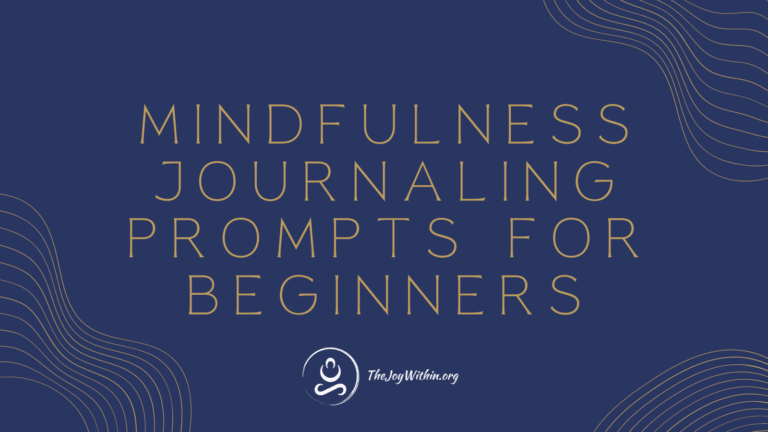Mindfulness is an incredibly powerful practice, with innumerable health benefits.
Whether you want to reduce stress, find your center, or raise your consciousness, mindfulness is a powerful skill to develop, and there’s no better way to practice becoming present in the moment than by spending time in nature.
In this post, I’ll share 5 of my favorite mindfulness nature exercises to help you get started.
5 Easy Mindfulness in Nature Exercises

1. The Touch of The Wind
The first exercise is a great practice to help you improve your sensory awareness, and feel a closer relationship with the energy that surrounds you.
When we are outside, we often notice the wind around us, but how often do we spend time to really focus on the feeling it creates, and the simple joy it can provide?
To do this exercise, you can be sitting, standing, or walking. For your first time, I recommend you sit and close your eyes, in order to train your mind to focus a little more clearly, but, with pracrice, you can do this technique anytime.
All you have to do is draw your attention to the feeling of the wind on your skin. Notce the constant motion of air that constantly ripples around you, even on a calm day.
Notice how it makes the hair on your arms feel, the tips of your fingers, or the touch against your cheek.
Choose a single part of your body to focus on, and spend 60 seconds simply feeling as deep a connection as you can to this motion of the air.
With practice, you will gradually be able to sense more and more subtle movements to this energy, and using the wind as a guidepost is a great technique for beginning to sense the motion of energy in other areas of your life.
Learn more mindfulness exercises for the 5 senses.
2. Intricate Observations
Another favorite outdoor mindfulness exercise is to play a game to notice as much detail in the natural world as you can.
Choose a single flower, or a tree, and just spend a few minutes marveling at it.
Notice the interconnection of lines on a leaf or petal, the pattern on its branches, or any other details you can find.
The longer you spend sitting, quietly looking for details of a single plant, the more fascination, awe, and child-like sense of wonder you will begin to feel.
3. Barefoot Walking
Walking meditation is another great strategy that is a perfect way to appreciate more of the natural beauty around you.
To take your walking meditation to the next level, I recommend you practice a barefoot walking technique.
To do it, simply remove your shoes and socks, and begin to walk slowly over whatever terrain you have in front of you.
The key is to move very slowly, and pay a lot of attention to the feeling of each step. See if you can notice what it feels like the moment your foot hits the ground, and how that sensation changes as you roll your foot forward to complete each step.
Feel the brush of the grass, soil, or sand beneath you, and, again, marvel at as many details of each step as possible.
4. Playful Creatures
Appreciating nature isn’t just about reveling in the static scenery, but appreciating the life and vibrancy of wherever you are.
One game I like to play is to spend time noticing the playfulness of the animals around you.
Birds are a great example, but any animal will do.
Just take 5-10 minutes to remain still, and watch your surroundings come alive. Often, our natural settings teem with life that we overlook.
Hiking briskly through a forest, for example, we often barely notice the birds, squirrels, or insects around us. When you stop to look, however, you start to see them everywhere. Spend time observing their natural behavior.
Smelling The Roses
Lastly, one of the most wonderful aspects of nature comes from the diverse array of smells we can experience through it.
Most of the time, we do not pay attention to these smells. We may say the air “feels fresh” not realizing that within this feeling are a number of different smells we could notice.
Take your time to try to identify these smells. Whether that’s moving to smell the flowers around you, or sticking your nose in the air to catch whatever is wafting in on the breeze.
This is a great practice for expanding your sensory awareness, since our olfactory system is the sense we most often overlook.

The Benefits of Nature Based Mindfulness
While you’ve probably already experienced the positive impacts that being in nature can have on your life, there’s also an increasing amount of scientific evidence that affirms that positive influence nature can have on our bodies and brains.
There’s a great article from Greater Good at UC Berkeley that outlines this research, and goes into detail about just how important it is to spend more time outside.
It talks about how being in nature can:
- Reduce Stress,
- Increase Happiness,
- Reduce Attention Fatigue,
- Increase Creativity, and even
- Make Your Kinder.
Read this post to learn more about the benefits of mindfulness and meditation.
Mindfulness and Nature Quotes
Nature does not hurry, yet everything is accomplished.
Lao Tzu
The clearest way into the universe is through a forest wilderness.
John Muir
Adopt the pace of nature. Her secret is patience.
Ralph Waldo Emerson
Paradise is not a place. It is a state of consciousness.
Sri Chinmoy





I like how real your examples are. I’ve tried apps for guided meditation, but honestly, just being outside and paying attention feels way more natural.